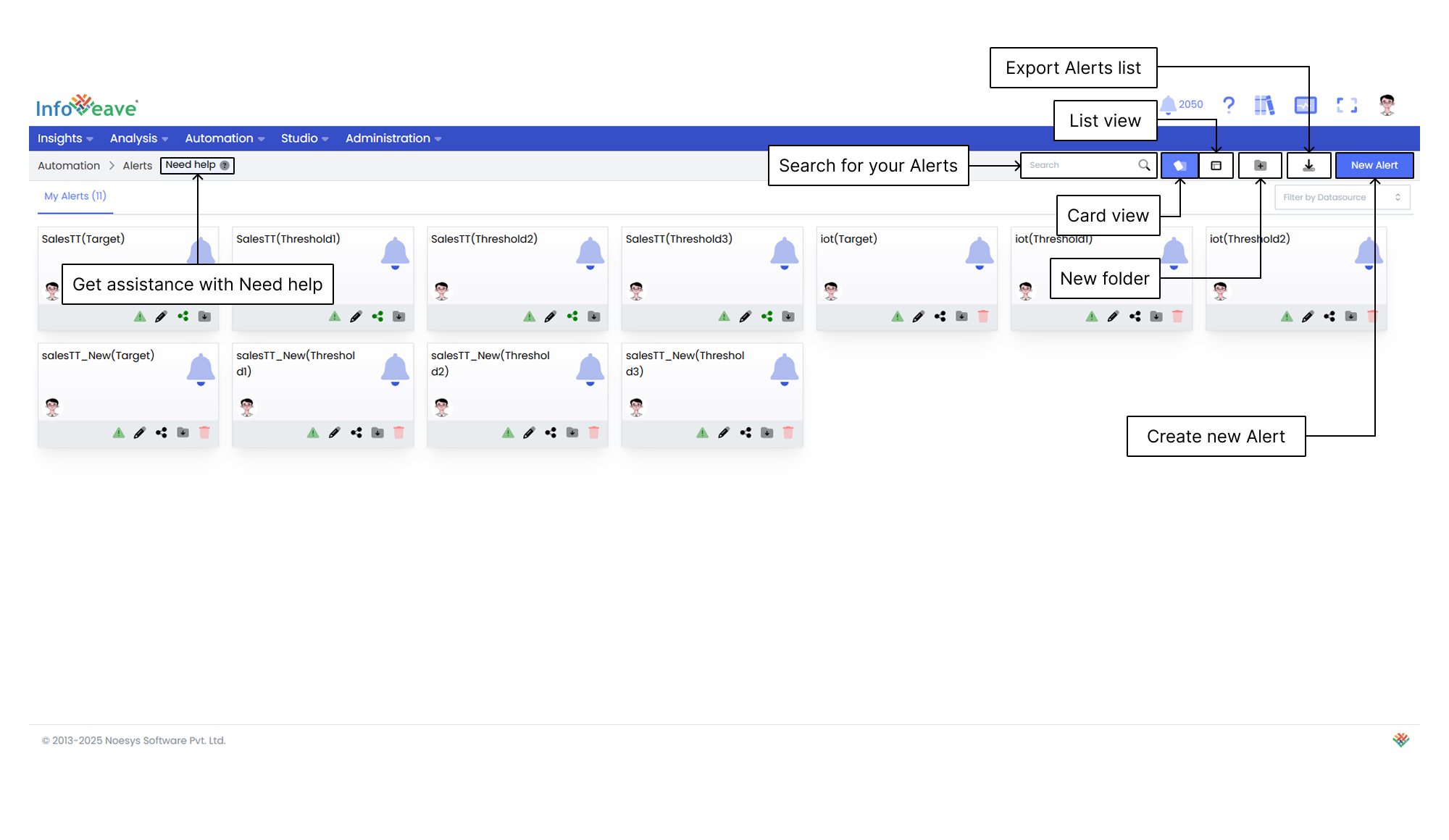Alerts Toolbar

Getting Help
If you are unsure how to create an Alert in Infoveave, you can always get assistance by clicking the Need Help button. When you click the button, you are directed to a visual walkthrough that explains how to create an Alert.

- Initiate an IoT alert Start the process of creating an IoT alert by clicking New Alert. This is the initial step where you define the parameters for your IoT alert. Creating a new IoT alert allows you to set conditions and actions based on real-time data from your IoT Datasource.
- Configure IoT alert Configure the IoT alert by defining the conditions that will trigger the alert and specifying the corresponding actions to be taken. Set the alert based on measures, alert rule types, relational operators, and dimensional filters for granularity. You also specify the actions, such as tasks or jobs, that should be executed when the alert conditions are met.
- Save and enable alert Save the configured IoT alert to ensure that the alert conditions and actions are stored for future reference. Enabling the alert activates it and allows Infoveave to continuously monitor the specified IoT Datasource based on your defined rules. This step provides real-time insights and triggers automated actions when necessary.
Using the Search Bar
The Search Bar at the top right of the screen allows you to quickly locate any Alert within the platform. Simply enter keywords related to the name of the Alert or any part of the content you are searching for.
Viewing Items in Card Layout
When you click the Card option in the layout filter, the items are displayed in a card-based view. This is the default layout for organizing Alerts. This layout provides a more visual representation of the Alerts and folders and makes it easier to identify and organize items.
Viewing Items in List Layout
When you click the List option, the layout changes to a table view. This displays the items and folders in a more detailed and structured format. This layout is ideal if you prefer seeing data in rows and columns. It allows for quick access to information such as the item name, type, creation date, last update date, and more.
Creating a New Folder
To organize your Alerts more efficiently, you can create a new folder. Here is how to do it.
- Click the New Folder button. This opens a popup where you can configure your new folder.
- In the popup that appears, you are prompted to enter a name for your new folder. Choose a name that helps you identify the folder’s purpose or contents.
- After entering the folder name, click the Save button to create the folder. The new folder appears under the Folders section.
Exporting the Alerts list
The Export Alert list feature enables you to download a structured file containing all available Alerts within the system. This functionality streamlines data management by providing a comprehensive overview for analysis, reporting, and sharing.
Creating an Alert
To learn about creating Alert, visit Creating Alerts
Filtering by Datasource
The Filter by Datasource option allows you to refine the available data when creating or managing Alerts. By clicking on the dropdown menu, you can select from the available Datasources. This feature ensures that you can tailor your Alerts to specific datasets.